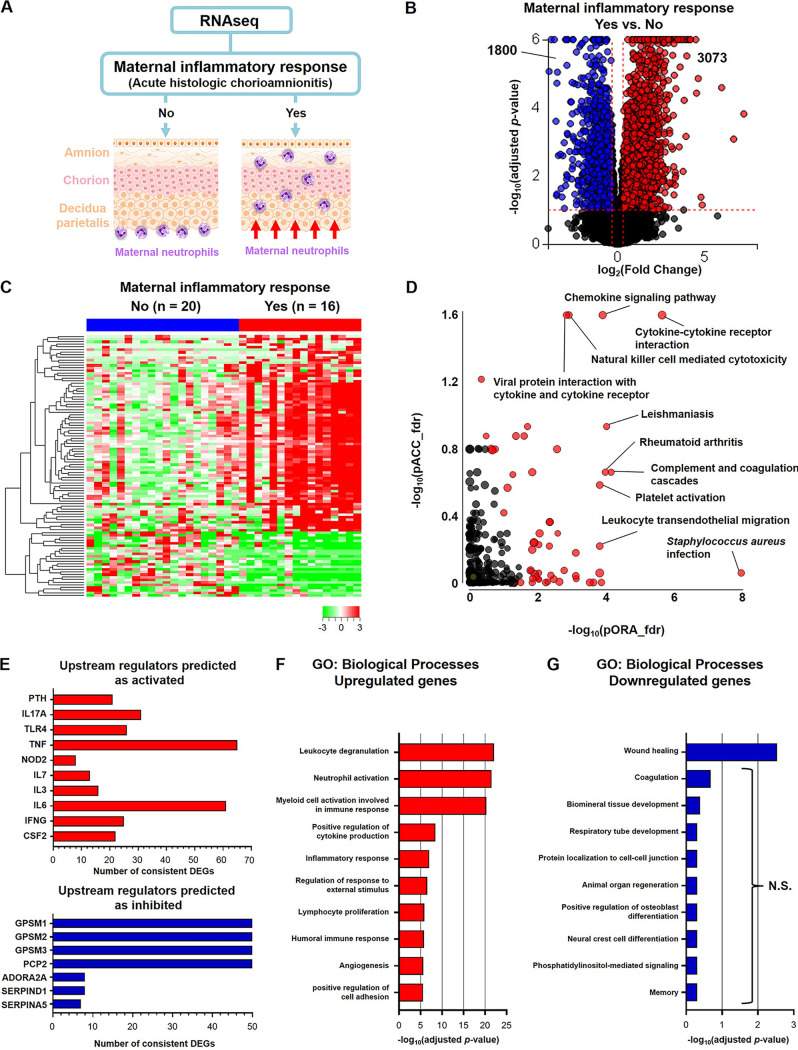FIG 6.
The transcriptomic profile of the chorioamniotic membranes is largely influenced by the presence of a maternal acute inflammatory response in the placenta. (A) Experimental design showing the transcriptomic comparison between the chorioamniotic membranes from women with a maternal inflammatory response (acute histologic chorioamnionitis) (n = 16) and those without a maternal inflammatory response (no acute histologic chorioamnionitis) (n = 20). (B) Volcano plot showing the differentially expressed genes (DEGs) between the chorioamniotic membranes from women with acute histologic chorioamnionitis and those without acute histologic chorioamnionitis. (C) Heatmap showing the chorioamniotic membrane expression (log2 thereof after eventual adjusting for covariates and subtracting the mean in the reference group) of the top 100 DEGs ranked by magnitude of change between groups. (D) KEGG pathway impact analysis evidence plot showing gene overrepresentation evidence (pORA) and total pathway accumulation evidence (pAcc) based on differential expression between the chorioamniotic membranes from women with acute histologic chorioamnionitis and those without acute histologic chorioamnionitis. Significantly impacted pathways are shown as red dots. (E) Predicted activated and inhibited upstream regulators of DEGs in the chorioamniotic membranes from women with acute histologic chorioamnionitis compared to those without acute histologic chorioamnionitis. (F and G) Gene ontology (GO) analysis using genes significantly upregulated (F) or downregulated (G) in the chorioamniotic membranes from women with acute histologic chorioamnionitis compared to those without acute histologic chorioamnionitis. The top 10 most enriched biological processes are shown. N.S., not significant.

